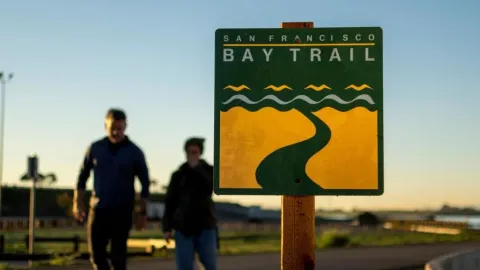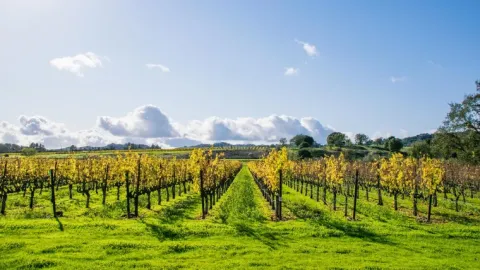
The San Francisco Bay Restoration Authority — co-staffed by the San Francisco Estuary Partnership and the State Coastal Conservancy — and other partners opened a 300-acre former industrial salt pond to San Francisco Bay this week as part of ambitious plan to restore wetlands.
The Wednesday levee breach is part of a 50-year effort to restore 15,000 acres of historic wetlands to tidal marsh and other habitats.
The project is funded, in part, by the funds generated by Measure AA and authorized by the San Francisco Bay Restoration Authority. Hosted by the Association of Bay Area Governments, the San Francisco Estuary Partnership is a collaboration of local, state and federal agencies; non-governmental organizations; and academic and business leaders working to protect and restore the San Francisco Bay-Delta Estuary.
“The restoration of the South Bay Salt Ponds is the most ambitious wetland restoration project on the West Coast,” said Restoration Authority Executive Officer Amy Hutzel. “It is thanks to the many people who have supported this project over two decades that we are able to breach the Ravenswood R4 pond, opening hundreds of acres to the tides and currents of San Francisco Bay."
Tidal marsh once ringed the South Bay and cushioned the shore from storms and tides. But over the course of the 20th century, approximately 85% of San Francisco Bay wetlands — more than 150,000 acres — were lost to development. Restored tidal marshes help to absorb floodwaters and buffer against sea level rise, support wildlife and improve water quality by filtering pollutants.
"The benefits of (the) breach will be felt by the wildlife that make their homes in tidal salt marshes, the adjacent communities that are now better protected from coastal flooding, and all of us who will get to watch this habitat come to life over the coming months and years,” Hutzel said.
With the breach, the South Bay Salt Ponds Restoration Project, the largest tidal wetland restoration project on the West Coast, has opened over 3,300 acres across the South Bay to allow nature to regrow tidal marshes, transforming former industrial salt ponds into a thriving mosaic of wetlands and creating habitat for endangered species and other wildlife.
Restoration is working: since the project began, endangered salt marsh harvest mice and Ridgway’s rails have returned to early restoration sites to live and reproduce. Through the Restoration Project, partners have also enhanced 700 pond acres, built nearly seven miles of recreational trails, a kayak launch and several viewing and interpretive areas, and opened the shore to public access. A new public trail is expected to open at Ravenswood in 2024.
The South Bay Salt Ponds were acquired in 2003 from Cargill Inc. in a deal brokered by the late Senator Dianne Feinstein, a long-time champion of the restoration effort. The 15,100-acre property transfer represents the largest single acquisition in a larger campaign led by multiple partners to restore 40,000 acres of lost tidal wetlands to San Francisco Bay.
The $13 million restoration effort at Ravenswood included accommodating a key component of the Bayfront Canal and Atherton Channel Flood Protection project, ensuring that the work is beneficial to wildlife and the surrounding communities.
Funding was provided by the California Department of Fish and Wildlife, the California State Coastal Conservancy, the San Francisco Bay Restoration Authority, the National Oceanic and Atmospheric Administration, the U.S. Environmental Protection Agency, the California Department of Transportation (Caltrans), the U.S. Fish and Wildlife Service and Meta. Services were donated by California Wildlife Foundation, Ducks Unlimited, Save the Bay, San Francisco Bay Bird Observatory and the City of Menlo Park.



Submit your comment
In order to receive a reply to your comment, please provide an email address.